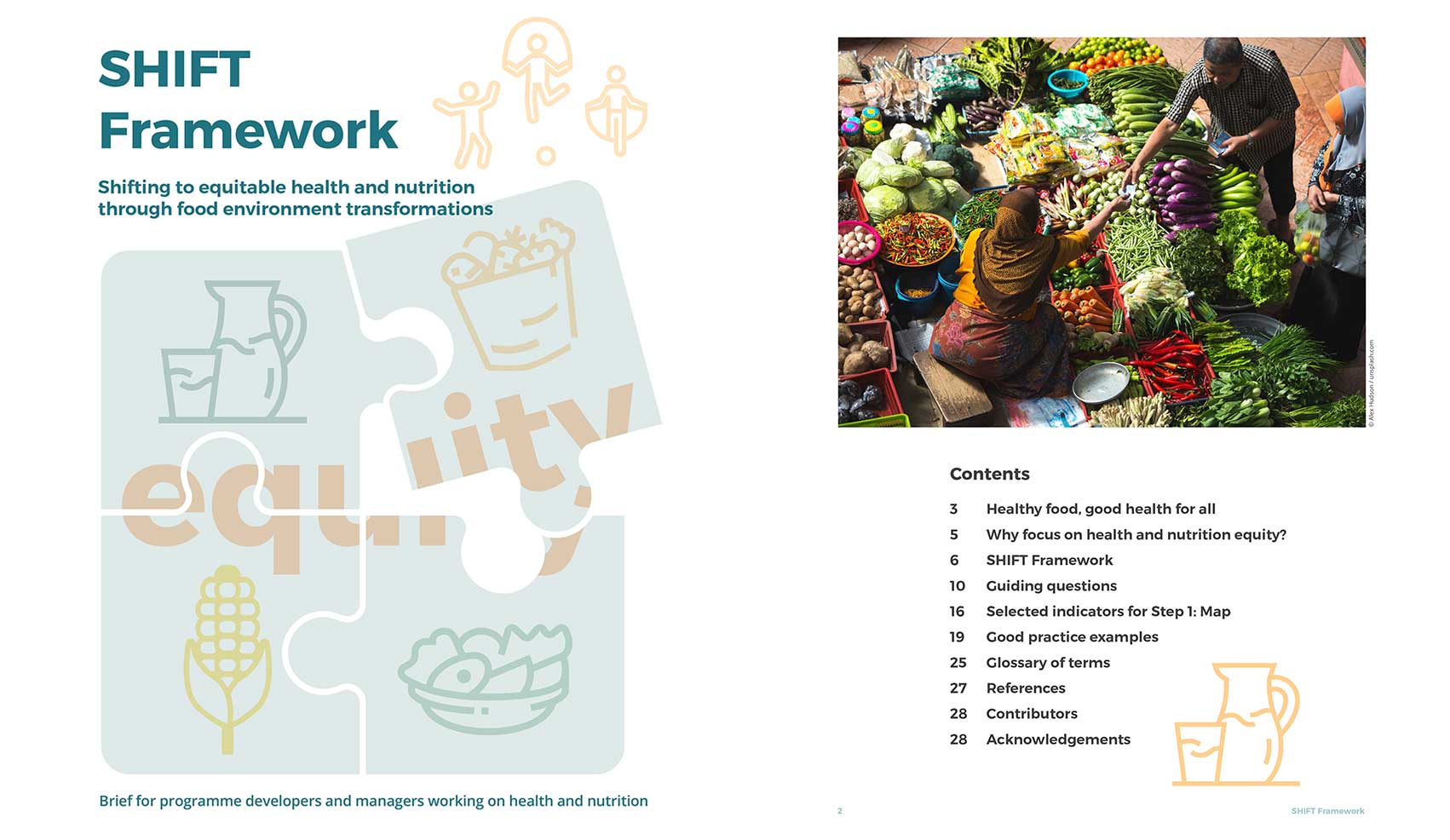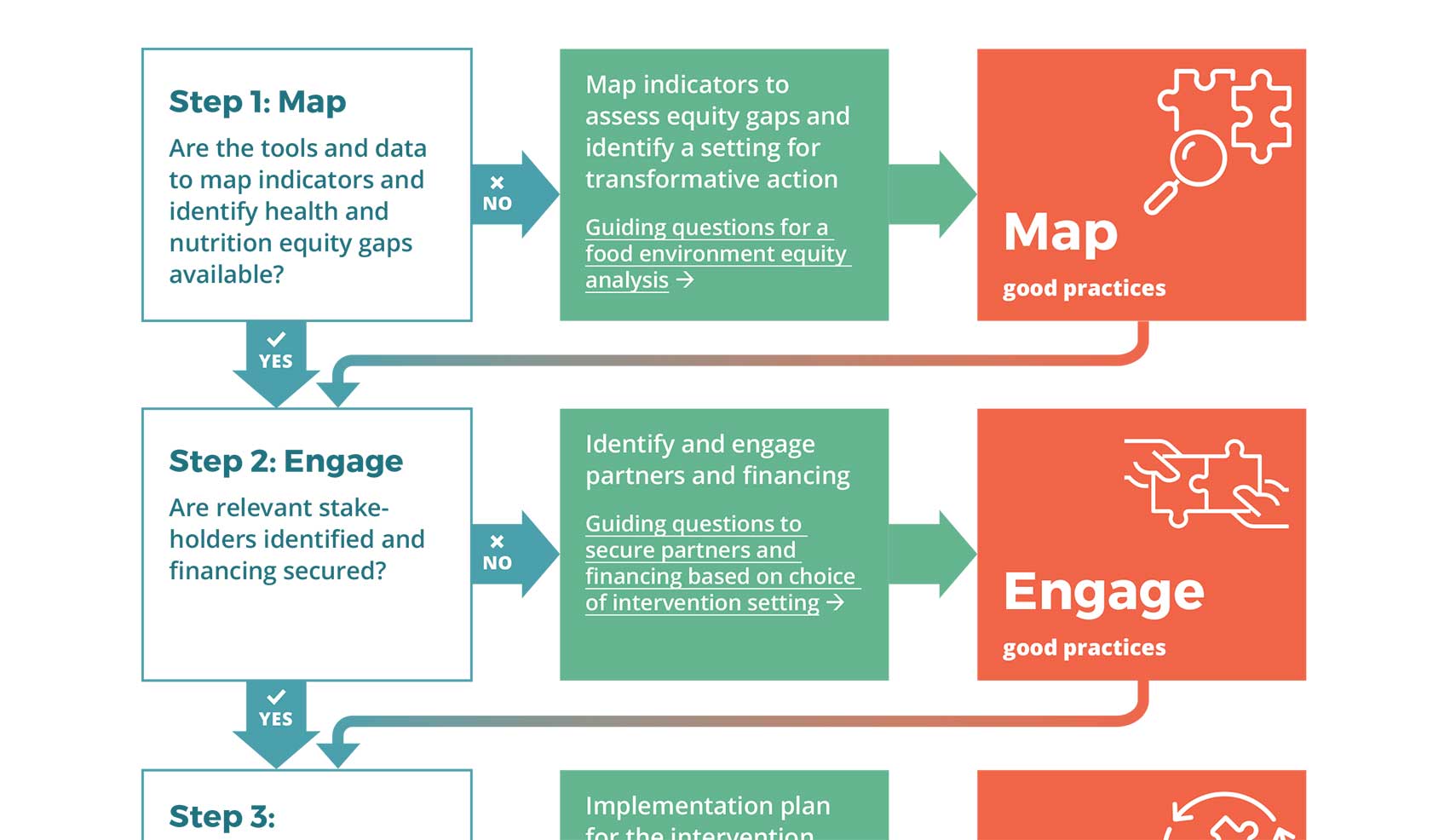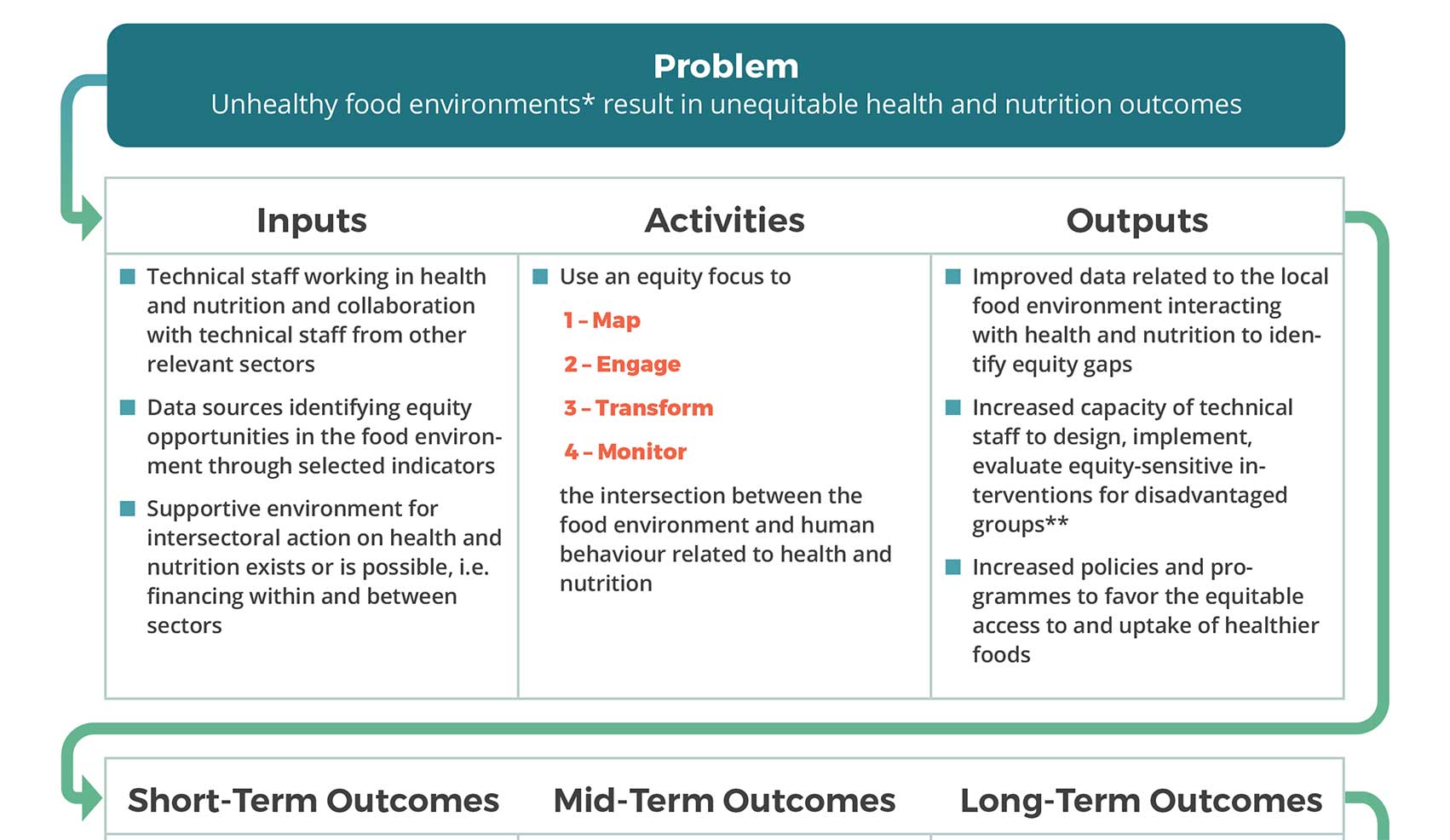SHIFT Framework
The SHIFT Framework was developed by an international team of researchers committed to improving health and nutrition equity. The Framework seeks to mobilize high level commitment and promote coordinated multi-stakeholder processes throughout, including the review of progress and sharing of lessons learnt. This process complements existing initiatives, reports and action plans addressing malnutrition and diet-related noncommunicable diseases such as the WHO Global Noncommunicable Diseases Action Plan, Global Nutrition Reports and the Healthy Food Index.
The SHIFT Framework consists of four steps: Step 1 is to Map, Step 2 is to Engage, Step 3 is to Transform, and Step 4 is to Monitor. For each step there is a yes or no question for making the decision as to what action to take and/or the next step to follow to move forward in the process.
 The user can start and end at any of the four steps, depending on what step is most appropriate for the specific setting.
The user can start and end at any of the four steps, depending on what step is most appropriate for the specific setting.
The interactive PDF provides further corresponding guiding questions. To complement the steps, best practice interventions have been linked to each step (see the framework search tool).
 It is crucial to have a supportive environment for intersectoral action on health and nutrition. This requires stakeholder involvement as emphasised throughout the process. This process consists of 4 interconnected steps.
It is crucial to have a supportive environment for intersectoral action on health and nutrition. This requires stakeholder involvement as emphasised throughout the process. This process consists of 4 interconnected steps.
 The Framework is based on a Theory of Change (ToC) focusing on the intersection between the food environment and human behaviour using an equity focus. The SHIFT ToC consists of a series of interconnected and interrelated steps that are grouped into three phases. Equity is the main focus, and it can be approached through targeting settings such as schools, workplaces or community hubs, or through targeting specific vulnerable groups for transformative action.
The Framework is based on a Theory of Change (ToC) focusing on the intersection between the food environment and human behaviour using an equity focus. The SHIFT ToC consists of a series of interconnected and interrelated steps that are grouped into three phases. Equity is the main focus, and it can be approached through targeting settings such as schools, workplaces or community hubs, or through targeting specific vulnerable groups for transformative action.
